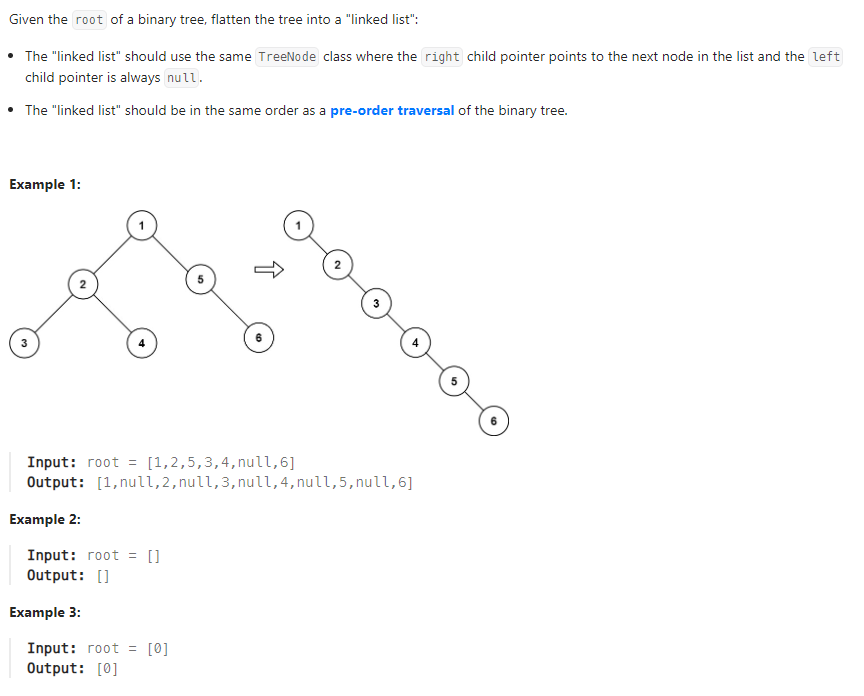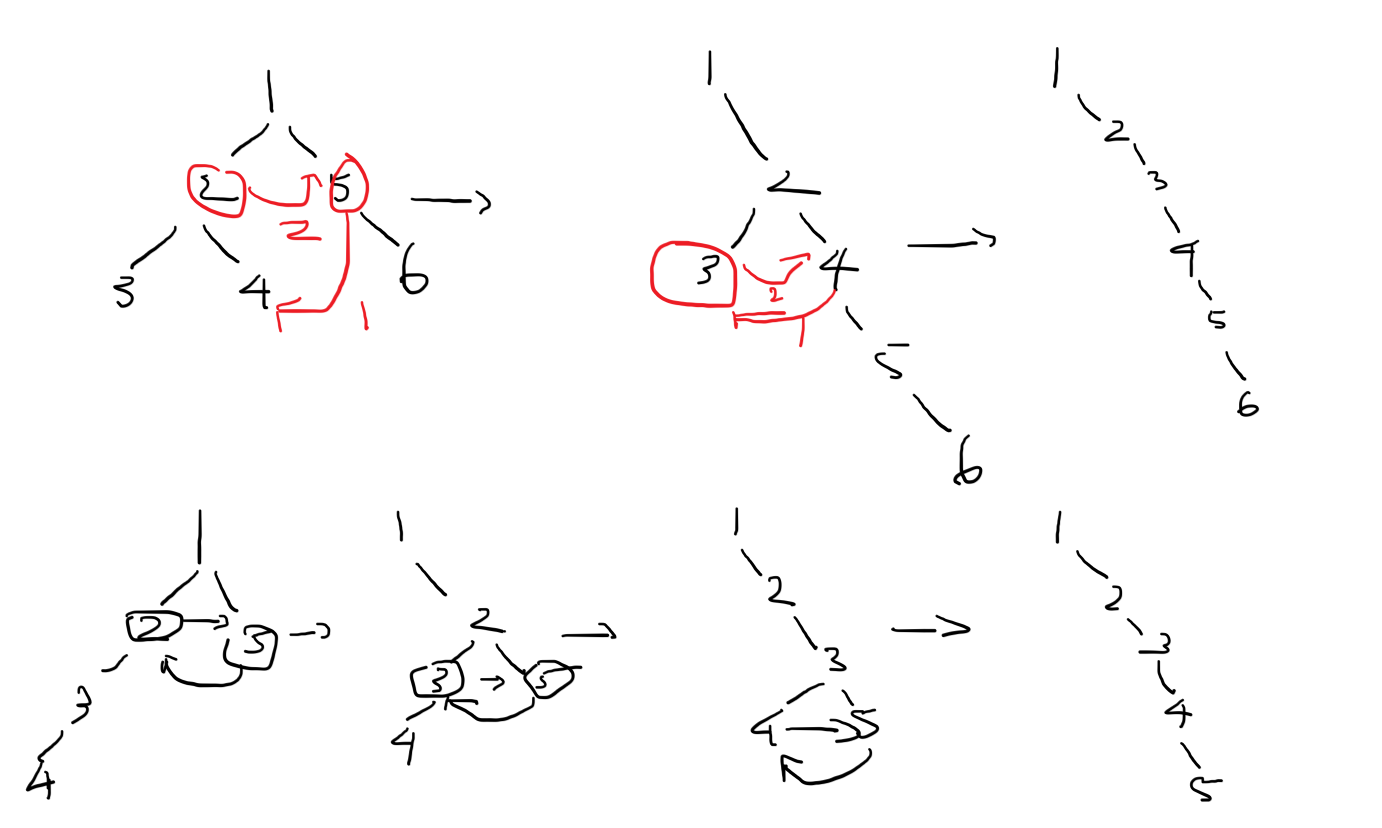Problem of The Day: Flatten Binary Tree to Linked List
Problem Statement

Intuition
My initial thought to solve this problem is to perform a recursive depth-first traversal of the binary tree. I want to flatten the tree in a way that preserves the original order of nodes. The idea is to move to the right subtree whenever possible, and if there’s a left subtree, move the rightmost node of the left subtree to the right, making the left subtree the new right subtree.
Approach
I approach this problem using recursion. If the current node has no left child, I recursively flatten its right subtree. Otherwise, I find the rightmost node of the left subtree, make it the new right subtree, and then recursively flatten the modified right subtree. This process is repeated until the entire tree is flattened in-place.
Complexity
-
Time complexity: O(n), where n is the number of nodes in the binary tree. The algorithm visits each node once.
-
Space complexity: O(n), where n is the height of the binary tree. This represents the maximum recursion stack space used during the traversal.
Code
# Definition for a binary tree node.
# class TreeNode:
# def __init__(self, val=0, left=None, right=None):
# self.val = val
# self.left = left
# self.right = right
class Solution:
def flatten(self, root: Optional[TreeNode]) -> None:
"""
Do not return anything, modify root in-place instead.
"""
if not root:
return
if not root.left:
self.flatten(root.right)
else:
node = root.left
while node and node.right:
node = node.right
node.right = root.right
root.right, root.left = root.left, None
self.flatten(root.right)
Alternative Approach - O(1) space solution
Follow up: Can you flatten the tree in-place (with O(1) extra space)?
Instead of employing recursion to address this problem, I endeavored to transform the implementation into an iterative style to tackle the subsequent question.
# Definition for a binary tree node.
# class TreeNode:
# def __init__(self, val=0, left=None, right=None):
# self.val = val
# self.left = left
# self.right = right
class Solution:
def flatten(self, root: Optional[TreeNode]) -> None:
"""
Do not return anything, modify root in-place instead.
"""
if not root:
return
while root:
right_most = root.left
while right_most and right_most.right:
right_most = right_most.right
if right_most:
right_most.right = root.right
root.right, root.left = root.left, None
root = root.right
Editorial Solution
class Solution:
def flatten(self, root: TreeNode) -> None:
"""
Do not return anything, modify root in-place instead.
"""
# Handle the null scenario
if not root:
return None
node = root
while node:
# If the node has a left child
if node.left:
# Find the rightmost node
rightmost = node.left
while rightmost.right:
rightmost = rightmost.right
# rewire the connections
rightmost.right = node.right
node.right = node.left
node.left = None
# move on to the right side of the tree
node = node.right
